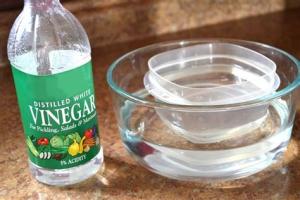Ultimate Guide: How to Effectively Clean Yellowed and Discolored Plastic

-
Quick Links:
- Introduction
- Why Does Plastic Yellow?
- Effective Cleaning Methods
- Preventing Yellowing in the Future
- Case Studies
- Expert Insights
- FAQs
Introduction
Plastic is an integral part of our daily lives, from household items to technology. However, over time, many plastic items can become yellowed and discolored, diminishing their aesthetic and functional value. This comprehensive guide will explore various methods to clean and restore yellowed plastic, providing you with effective techniques to bring your items back to life.
Why Does Plastic Yellow?
The yellowing of plastic is a common issue related to several factors:
- UV Exposure: Prolonged exposure to sunlight can lead to chemical changes in plastic, causing discoloration.
- Oxidation: Over time, oxygen interacts with the plastic, leading to a breakdown of its molecular structure.
- Heat: High temperatures can accelerate the yellowing process.
- Contaminants: Dirt, grease, and other substances can contribute to discoloration.
Understanding these causes is crucial for effective cleaning and prevention strategies.
Effective Cleaning Methods
Here, we will detail several practical methods to clean yellowed plastic, ranging from household items to store-bought products.
Baking Soda Method
Baking soda is a safe and effective abrasive cleaner. Here's how to use it:
- Make a paste using 1/2 cup of baking soda and a few tablespoons of water.
- Apply the paste to the yellowed areas of the plastic using a soft cloth or sponge.
- Gently scrub the area in circular motions.
- Rinse thoroughly with warm water and dry with a clean cloth.
Hydrogen Peroxide Method
Hydrogen peroxide is a powerful bleaching agent. Follow these steps:
- Soak the plastic in hydrogen peroxide (3% concentration) for at least 30 minutes.
- For more severe yellowing, cover the plastic with plastic wrap to keep it moist.
- Rinse thoroughly and dry.
Toothpaste Method
Toothpaste can gently polish and remove discoloration:
- Apply a small amount of non-gel toothpaste to a cloth.
- Rub it on the yellowed area gently.
- Rinse with water and wipe dry.
Commercial Cleaning Products
There are several commercial products designed specifically for plastic cleaning. Look for products that contain:
- Oxidizing agents
- Non-abrasive formulas
- Safe for the specific type of plastic you are cleaning
Preventing Yellowing in the Future
Prevention is key in maintaining the appearance of plastic. Here are some tips:
- Store plastic items out of direct sunlight.
- Use UV-protective sprays for outdoor plastics.
- Keep plastics clean and free from contaminants.
Case Studies
Let’s explore a couple of case studies where individuals successfully restored yellowed plastic items.
Case Study 1: Restoring Vintage Toy Action Figures
A collector noticed that his vintage action figures had become yellowed over the years. He decided to use the hydrogen peroxide method, placing the figures in a sunny spot for a few hours before rinsing them off. The results were remarkable, with the figures looking nearly brand new.
Case Study 2: Revamping Home Appliances
A homeowner tackled the yellowing on the plastic parts of an old kitchen appliance using toothpaste. After a thorough cleaning, the appliance's exterior was restored, making it more presentable in their kitchen.
Expert Insights
Experts suggest that while these methods can be effective, it’s essential to test any cleaning method on a small inconspicuous area first. This ensures that the cleaning solution won't damage the plastic further.
FAQs
1. Can yellowed plastic be completely restored?
In many cases, yellowed plastic can be significantly restored, though complete restoration may depend on the level of damage.
2. Is it safe to use bleach on plastic?
Using bleach is not recommended as it can damage plastic. Instead, opt for gentler methods like baking soda or hydrogen peroxide.
3. How often should I clean my plastic items?
Regular cleaning, at least every few months, can help prevent yellowing.
4. Are there specific products I should avoid on plastic?
Avoid abrasive cleaners and solvents that can scratch or degrade the plastic material.
5. How can I prevent my outdoor plastic furniture from yellowing?
Use UV protectant sprays and store furniture in shaded areas when not in use.
6. Can I use vinegar on yellowed plastic?
Vinegar can be used as a mild cleaner, but it may not be as effective as other methods for deep stains.
7. What is the best way to clean clear plastic?
Use a gentle soap solution with a microfiber cloth to avoid scratches and maintain clarity.
8. Can I use a power washer on plastic?
Power washing is not recommended for plastic as it can cause cracking and further damage.
9. How do I know if my plastic is too damaged to restore?
If the plastic is brittle or has significant cracks, it may not be able to be restored effectively.
10. Are there any long-term effects of using these cleaning methods?
When done properly, most methods should not negatively affect the plastic. However, excessive scrubbing or harsh chemicals can cause wear over time.
Random Reads
- Unlocking voice chat roblox
- Unlocking skyscrapers simcity 4
- How to puncture the seal on caulk
- How to unclog a toilet with baking soda
- How to unclog dishwasher
- How to thin latex paint
- How to throw away trash can
- How to remove a radiator for decorating
- How to reinstall minecraft
- How to take apart xbox one controller